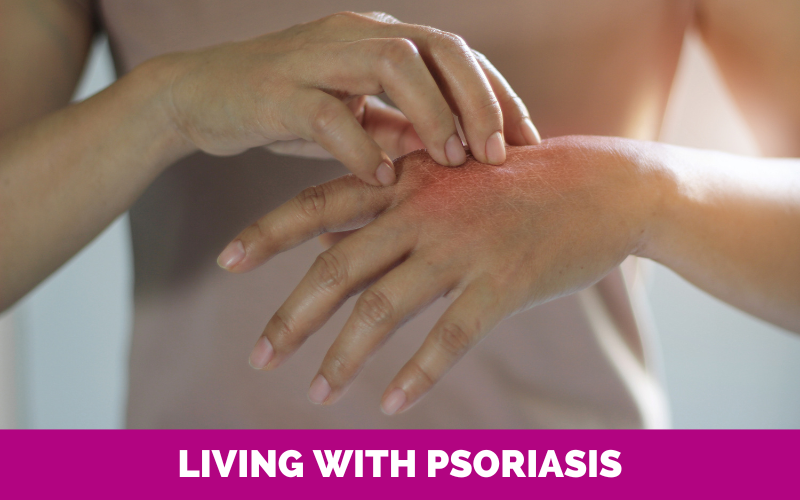Psoriasis Treatments
Topical, Light therapy and Systemic treatment options
If you suspect you might have psoriasis, it’s important to see a dermatologist as soon as possible to get examined, diagnosed and treated. Because psoriasis is an immune system disorder, it generally won’t go away (and stay away) on its own. Effective psoriasis treatment can relieve not just symptoms, but underlying inflammation that can cause other serious problems over time.
Some psoriasis treatments are applied directly to affected areas to help shrink them and make them less dry and itchy. Others work on the immune system itself, holding it back from attacking healthy cells to stop psoriasis symptoms in their tracks.
The kind of psoriasis treatment your dermatologist recommends will depend on how serious your psoriasis symptoms are (mild, moderate or severe) and where they’re located.
The traditional approach is to start with the mildest treatments — topical creams and ultraviolet light therapy — and then progress to stronger ones only if necessary due to the side effects of these stronger options. We all respond to treatments differently so it can take trial and error to find the right mix of treatments for you.
Here’s a look at the different ways psoriasis can be treated.
Topical treatments
Emollients
Psoriasis can leave the skin feeling parched so many people find it helpful to apply a gentle emollient, such as Vaseline, to moisturise their skin. Avoid products that are overly fragrant or have a lot of additives as they could sting or aggravate symptoms.
One method called “occlusion” helps calm pain quicker than other home remedies. It involves applying moisturiser or oil to sore areas and wrapping them with plastic wrap or covering them with socks, a plastic bag, or gloves (if the soreness is in the hands or feet).
Salicylic acid
Salicylic acid, an ingredient found in certain moisturisers, encourages the skin to self-exfoliate, so it can reduce the scaliness of psoriasis by getting rid of debris and excess proteins called keratins. It may also help other medications penetrate more effectively as the tough layer of skin cells peels away.
Topical corticosteroid creams
Topical steroids don’t just ease the itchiness and pain of skin plaques; they slow skin cell turnover by suppressing the immune system. Topical steroids are useful during flare-ups but relying on them long term is generally not recommended as they may cause the skin to become thinner.
Vitamin D analogues
Vitamin D, the “sunshine vitamin” your body makes from being exposed to UV light, is important for keeping your skin healthy. Having low vitamin D levels won’t cause psoriasis, but people with psoriasis do tend to be deficient in vitamin D. Vitamin D analogues (such as calcipotriol or calcipotriol) are not the same as vitamin D supplements. Instead, they are combined with a topical corticosteroid to help slow skin cell growth and rebalance or normalise the way your immune system is responding. Vitamin D will also encourage healthier skin cells to grow.
Light therapy
UV light can suppress the immune system, however, extended exposure to sunlight is not recommended. Instead, dermatologists use machines that emit UV light with shorter (and safer) wavelengths than produced by the sun or a tanning bed. Light therapy (phototherapy) is available in Australia through dermatology clinics and is subsidised by Medicare.
Systemic treatments
Retinoids
Vitamin A derivatives called retinoids encourage old skin cells to make way for newer, healthier ones, which can help eliminate psoriasis plaques. Some retinol products can be bought over the counter, but more potent topical retinoids such as tretinoin, isotretinoin or tazarotene are only available on prescription. Retinoids are available in topical and oral forms.
Disease-modifying treatments
Disease-modifying anti-rheumatic drugs (DMARDs) work by suppressing an overactive immune system. This slows disease activity and reduces inflammation. Conventional synthetic DMARDs (such as methotrexate and cyclosporine) are made from synthetic chemical compounds with small molecules. They are also small enough to be processed through the digestive system, so they can be taken in oral form.
The risk with DMARDs is they can suppress the immune system to the point where pathogens such as viruses can take hold. Therefore, it is important for patients and their treating doctors to work together to find the immunosuppressive treatment and dose that best balances these competing priorities.
PDE4 inhibitors
This newer category of medication is considered a targeted therapy. It affects a pathway in the immune system that causes inflammation in plaque psoriasis. PDE4 inhibitors are not considered biologics but they are more targeted than traditional disease-modifying drugs like methotrexate or cyclosporine.
In Australia, people with severe chronic plaque psoriasis who cannot use methotrexate may be prescribed the PDE4 inhibitor apremilast by their dermatologist.
Biologic medications
Patients with severe psoriasis and/or psoriatic arthritis can apply for access to biologics (also called biologic DMARDs) such as adalimumab, guselkumab and infliximab. Biologics for these conditions can only be prescribed by dermatologists or rheumatologists.
These medications are developed from biologically sourced cells and have very large molecular structures compared to those of oral-form medications. (Picture a basketball next to a pea and you’ll get the idea.) As a result, biologics cannot be processed through the digestive system. Instead, they are injected or infused into the bloodstream.
Biologics are designed to act like the proteins that are already in your body. They target specific areas of your immune system and are proven to be very effective at minimising disease activity. Because they are so specific, they may cause fewer side effects than conventional synthetic DMARDs. However, like other DMARDs, they can increase your risk of infection and they may work well for some people and not others.
Psoriasis diet
No diet can cure psoriasis. Though there is little scientific evidence for a psoriasis diet, many people with psoriasis say they’ve found symptom relief from changing what they eat. Obesity is linked to an increased risk of psoriasis and can worsen the severity. Therefore, it is a good idea to maintain a healthy weight to the best of your ability.
Reducing inflammation with an anti-inflammatory diet may also be helpful. This includes eating oily fish high in omega-3s such as salmon, plenty of fruits and vegetables (particularly dark leafy greens), low-fat dairy products, nuts and nut butter.
Foods that increase inflammation should be avoided or reduced, such as partially hydrogenated oils, fatty red meats, fried foods and processed/fast foods. If you have severe psoriasis, it may be beneficial to reduce or eliminate alcohol.
People with psoriasis have an increased risk of gluten sensitivity and inflammatory bowel diseases (including Crohn’s disease and ulcerative colitis) so if you experience any digestive symptoms, it is important to be tested for these conditions.
Helpful resources
International resources





